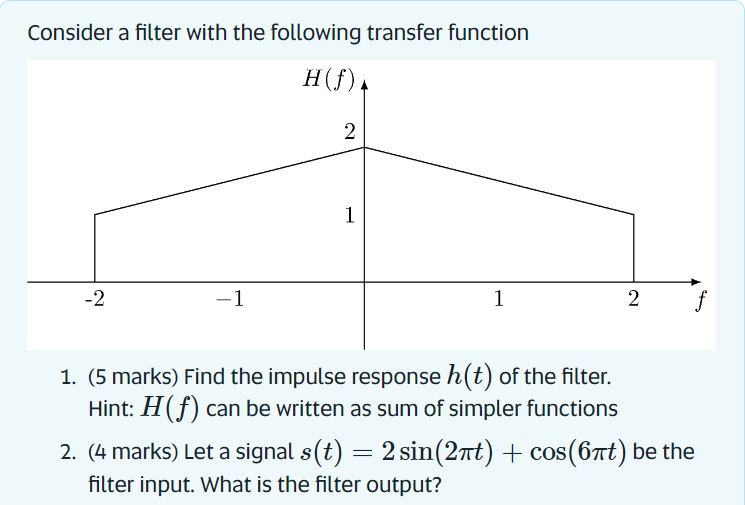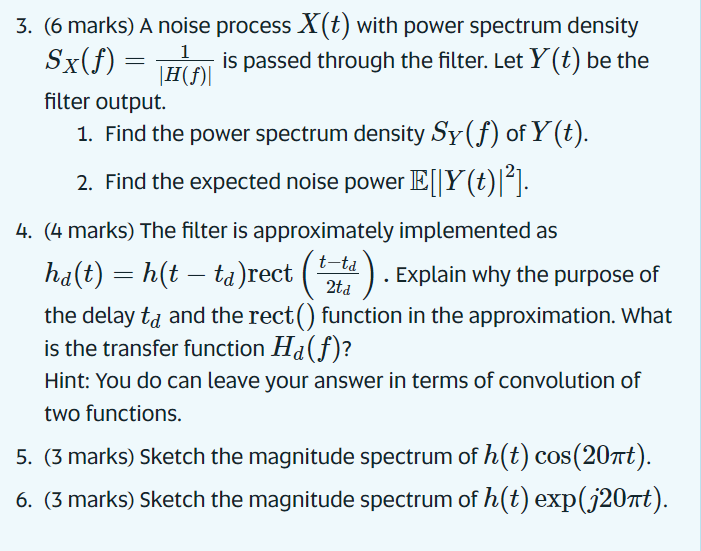Home /
Expert Answers /
Electrical Engineering /
consider-a-filter-with-the-following-transfer-function-1-5-marks-find-the-impulse-response-h-pa923
(Solved): Consider a filter with the following transfer function 1. (5 marks) Find the impulse response \( h ...
Consider a filter with the following transfer function 1. (5 marks) Find the impulse response \( h(t) \) of the filter. Hint: \( H(f) \) can be written as sum of simpler functions 2. (4 marks) Let a signal \( s(t)=2 \sin (2 \pi t)+\cos (6 \pi t) \) be th
3. (6 marks) A noise process \( X(t) \) with power spectrum density \( S_{X}(f)=\frac{1}{|H(f)|} \) is passed through the filter. Let \( Y(t) \) be the filter output. 1. Find the power spectrum density \( S_{Y}(f) \) of \( Y(t) \). 2. Find the expected noise power \( \mathbb{E}\left[|Y(t)|^{2}\right] \). 4. (4 marks) The filter is approximately implemented as \( h_{d}(t)=h\left(t-t_{d}\right) \operatorname{rect}\left(\frac{t-t_{d}}{2 t_{d}}\right) \). Explain why the purpose of the delay \( t_{d} \) and the rect() function in the approximation. What is the transfer function \( H_{d}(f) \) ? Hint: You do can leave your answer in terms of convolution of two functions. 5. (3 marks) Sketch the magnitude spectrum of \( h(t) \cos (20 \pi t) \). 6. (3 marks) Sketch the magnitude spectrum of \( h(t) \exp (j 20 \pi t) \).

